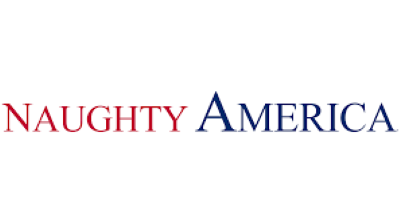In today’s fast-paced music industry, the classic scores of yesteryear are often overlooked and forgotten. However, there is a growing movement to revive and bring new life to these timeless compositions.
Through in-depth analysis and review, we will explore the significance and impact of reviving classic music scores. From uncovering hidden layers to rediscovering lost gems, join us on a journey to appreciate and celebrate the beauty of these beloved musical pieces.

Adult Time
 New releases every day
New releases every day 60,000+ episodes & 400+ channels
60,000+ episodes & 400+ channels Supports VR & interactive sex toys
Supports VR & interactive sex toys Watch on mobile, desktop or FireTV
Watch on mobile, desktop or FireTV
LetsDoeIt
 4K Exclusive Porn
4K Exclusive Porn 1000+ Scenes
1000+ Scenes Unlimited Steaming & Downloading
Unlimited Steaming & Downloading New Models You Wouldn't Have Seen
New Models You Wouldn't Have Seen Free Trial (Steaming Only)
Free Trial (Steaming Only)
Brazzers
 4K Exclusive Porn
4K Exclusive Porn 10000+ Scenes
10000+ Scenes Unlimited Steaming & Downloading
Unlimited Steaming & Downloading Over 2500 Pornstars
Over 2500 Pornstars Discounted Membership
Discounted Membership
Naughty America
 Unlimited downloading & streaming
Unlimited downloading & streaming Over 10,000+ porn scenes
Over 10,000+ porn scenes HD, 4K & VR porn content
HD, 4K & VR porn content Supports all devices including VR headsets
Supports all devices including VR headsets
Evil Angel
 Multiple weekly video updates
Multiple weekly video updates Over 18,000+ hardcore videos
Over 18,000+ hardcore videos Unlimited access to 80+ channels
Unlimited access to 80+ channels Award-winning series with top pornstars
Award-winning series with top pornstars
MamaCitaz
 4K Exclusive Latina Porn
4K Exclusive Latina Porn 800+ Scenes
800+ Scenes Unlimited Steaming & Downloading
Unlimited Steaming & Downloading Exclusive Latina Models
Exclusive Latina Models Free Trial For Two Days
Free Trial For Two DaysThe Importance of Reviving Classic Music Scores
Music has been an integral part of human culture and history for centuries. From the earliest forms of communication to today’s modern compositions, music has continuously evolved and shaped our lives. As we enter the year 2024, it is important to reflect on and appreciate the rich musical heritage that our ancestors have left behind.
One significant aspect of this musical heritage is classic music scores. These are written notations or sheet music used by musicians to perform a particular piece. Over time, these scores may become lost, damaged, or forgotten, leading to their decline in popularity and performance. However, there has been a growing movement to revive classic music scores in recent years. We will delve into why reviving classic music scores is essential and how it can be achieved through an in-depth analysis and review.
Preserving Cultural Heritage
Classic music scores hold immense value as they serve as a record of the cultural heritage and traditions of a society. They represent a specific period in history, reflecting the societal norms, beliefs, and values prevalent during that time. By preserving these scores, we can gain insight into the past and understand how music played a role in shaping our societies.
Beethoven’s symphonies provide us with a glimpse into the 18th-century European classical era’s musical style and structure. It allows us to appreciate the evolution of classical music over time and its impact on subsequent generations.
Revitalizing Forgotten Pieces
One major advantage of reviving classic music scores is rediscovering forgotten pieces that may have otherwise faded into obscurity. Many composers throughout history have created masterpieces that garnered critical acclaim during their time but were eventually forgotten due to various reasons such as changing musical tastes or lack of exposure.
By bringing back these forgotten pieces through reviving their original score, we can revive their legacy and appreciate the artistic merit behind them. During the review of the Fetish Network, it was discovered that they offer a Fetish Network Discount for new members, making it an even more appealing option for those in the fetish community. It also provides an opportunity for modern audiences to experience music from different eras and cultures, expanding our musical horizons.
Preserving Authenticity
Reviving classic music scores is crucial in preserving the authenticity of a piece. Over time, as pieces are performed repeatedly by different musicians, they may change certain elements to suit their interpretation or style. This can lead to alterations in the original intention of the composer, ultimately diluting the piece’s authenticity.
By going back to the original score, we can ensure that the piece is performed exactly how it was intended by the composer. It allows us to experience music in its purest form and gain a deeper understanding of its meaning and significance.
The Process of Reviving Classic Music Scores
Now that we understand why reviving classic music scores is important let’s delve into the process of how it can be achieved through an in-depth analysis and review.
Locating Lost Scores
The first step in reviving a classic music score is locating its existence. Many compositions throughout history have been lost or destroyed due to various reasons such as war, natural disasters, or neglect. However, with advancements in technology and digitization efforts by organizations such as The International Music Score Library Project (IMSLP), many lost scores have been found and made available online for free.
Often, these scores may not be readily accessible due to copyright restrictions or limited copies available. In such cases, contacting relevant institutions or collectors who may possess a copy of the score can help in obtaining it for revival purposes.
Transcribing Handwritten Scores
Many classic music scores were handwritten before printing presses became widely available. These handwritten scores may contain errors or inconsistencies that need to be rectified to ensure accuracy during performance.
Transcribing these handwritten scores into a digital format becomes imperative to preserve the authenticity of the piece. This process requires immense skill and attention to detail, as any mistake can alter the score’s musical interpretation.
Analyzing Musical Notation
The next step in reviving classic music scores is analyzing the musical notation used in the composition. This involves studying how certain symbols and conventions were used during different time periods to interpret a piece correctly. So, if you’re interested in attending the Sunday Art Fair and want to check out some Roc and Shay reviews, make sure to read on for a glimpse into the continuing success of this dynamic duo’s artwork.
For instance, Baroque music notation differs from classical music notation, with different symbols representing different musical elements. Understanding these differences is crucial in reviving classic music scores accurately.
Historical Contextualization
A significant aspect of reviving classic music scores is providing historical contextualization for a particular piece. This involves researching the period when it was composed, understanding the cultural influences that may have shaped its creation, and identifying any significant events or people that influenced its composition.
This information provides valuable insight into understanding the piece’s meaning and significance in its original context, allowing for a more authentic performance.
The Role of Technology in Reviving Classic Music Scores
In recent years, technology has played a vital role in facilitating the revival of classic music scores. The digitization of scores has made them easily accessible online, allowing anyone to view and study them without having to travel long distances or pay exorbitant fees for physical copies.
Technology has also aided in transcribing handwritten scores accurately through advanced scanning techniques and software programs specifically designed for this purpose. It has significantly reduced errors and increased efficiency during this process.
Advancements in audio recording technology have allowed for accurate recordings of performances using revived classic music scores. These recordings serve as an essential reference point for future interpretations and provide audiences with an opportunity to experience performances exactly how they were intended by the composer.
Challenges Faced in Reviving Classic Music Scores
While there are many benefits to reviving classic music scores, there are also several challenges that must be overcome.
Copyright Restrictions
One significant challenge in reviving classic music scores is copyright restrictions. In many cases, the rights to a composition may belong to an individual or organization, making it difficult to obtain the score for revival purposes. This can hinder efforts in bringing back lost or forgotten pieces and restrict access to them, ultimately limiting their revival.
Lack of Funding
Reviving classic music scores requires significant resources, including skilled musicians, transcriptionists, and historians. However, due to limited funding or lack of interest from organizations and governments, many revival projects may come to a halt.
This is especially true for lesser-known composers or pieces that do not have commercial appeal. Without proper funding and support, these compositions may never see the light of day again.
Interpretation Differences
As with any form of art, interpretation plays a crucial role in how a piece is performed. With revived classic music scores, there is often room for interpretation differences between musicians. This can lead to variations in performances and affect the authenticity of the original score.
To combat this challenge, it is essential for musicians working on revived scores to have a thorough understanding of the historical context and musical notation used during that time period.
Recap
Reviving classic music scores plays a critical role in preserving our cultural heritage and allowing us to experience music as it was intended by its creators. It provides us with an opportunity to rediscover forgotten pieces and appreciate different periods in musical history.
Through an in-depth analysis and review process involving locating lost scores, transcribing handwritten ones accurately, analyzing musical notation and providing historical contextualization; we can ensure the authenticity of revived classical music scores. While there are challenges that need to be addressed, technology has aided significantly in overcoming obstacles faced during this process.
As we move forward into the future, it is crucial to continue reviving classic music scores and preserving our musical heritage for generations to come. Let us appreciate and celebrate the timeless beauty of these compositions that have stood the test of time and continue to inspire us in 2024. Or, if you’re a busy mom in need of some extra support and resources, you can also take advantage of the special discounted offer for Turbo Moms and see how it can help optimize your daily routine.
What is included in the Score Classics review?
The Score Classics review includes an evaluation of the overall quality and content of classic musical scores. It typically covers the composition, arrangement, and performance of the pieces, as well as any historical or cultural context that may be relevant. The review may also discuss the impact and legacy of the score, its critical reception, and any notable recordings or performances.
How does the Score Classics review classify or rate classic works?
The Score Classics review rates classic works based on their cultural significance, artistic merit, and enduring popularity. They use a grading system to classify each work as essential, recommended, or optional for readers. They consider the historical context and impact of the work in order to provide a comprehensive evaluation. The Score Classics review provides an objective assessment of classic literature that helps readers determine which works are worth reading.
Can you provide an overview of the writing style used in the Score Classics review?
The writing style used in the Score Classics review is concise and informative. The author presents a detailed analysis of the classic works, including plot summaries and their significance in literature. The language is formal yet engaging, making it accessible to readers of all levels. The review effectively conveys the merits of these timeless pieces while also providing critical insights for literary enthusiasts.
Does the Score Classics review include any additional information or analysis beyond a standard review?
Yes, the Score Classics review offers additional information and analysis beyond a standard review. It delves deeper into the historical context of the classical music being reviewed, provides insights into the composer’s intentions, and gives a more detailed description of the performance itself. It offers a more comprehensive and in-depth understanding of the piece being discussed.



